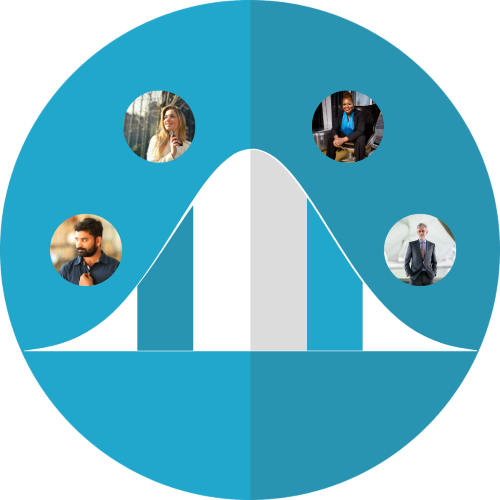By Peter A. Arthur-Smith

‘Train people well enough so they can leave. Treat them well enough so they don’t want to.’ Sir Richard Branson, Chairman, Virgin Group.
We all want our team members to perform in an optimal way, although all too often we don’t give enough due thought as to how to make that happen. We all too often hear the cliché: ‘I want a self-starter:’ which many times means, ‘ I just want someone who’ll make it happen – no training, no coaching or close support necessary. I’ve got my own stuff to contend with and don’t have time for all the extra hand-holding.’ Such talk is like music to the head-hunter’s ears; especially as the $ fee climbs with each groan. They spice you with the top-end of the bell-curve.
Maybe you’re one of those self-starters, at the right end of the adjacent bell-curve pictograph, who didn’t need any training from the get-go. You just made it work. If you needed some books, you did that. If you needed to squeeze some coaching time from those around you, you did that, too. Then you dived-in, hands-on, made some mistakes and learnt from those mistakes and still pressed on. Nothing wrong with that, other than that you may well have picked up some bad habits along the way – much in the same way as rookie-golfers do when they don’t seek coaching from a golf-pro from the outset. Those golfing bad habits hold you back for the rest of your playing career, unless of course you return to a golfing boot-camp.
Now what are you supposed to do? Being a self-starter you’re probably not particularly interested in orienting, developing or coaching people – you’d rather evade that requirement like the plague. Conventional entrepreneurs are especially unlikely to address it because by nature they’re self-starters, too. At the same time, you just cannot ignore the training or education needs of the other 88% of the population. Obviously that 88% relates to a spectrum from those needing relatively limited education to those who require a lot of hand-holding. You just have to decide what is the minimal acceptable level within your organization: in accord with your domain’s natural distribution curve – see the earlier pictograph.
To ease your burden of orienting or educating team members around you, there are at least two constructive approaches you can take:
- Pairing – For a ‘newbie:’ pair them up with someone within your domain who has more people-patience than you do for orienting or educating people. Encourage that pairing-coach to put together an action-initiative and even a staircase – see earlier articles – on how they intend to orient-educate their ‘charge’ over the initial days-weeks. This will become a potential team-leader assignment as that person makes themselves available for answering questions from their ‘charge’ until they’re fully up-to-speed.
- In–Team Discovery – Where you have team members in the same or similar disciplines, bring them together in smallish groups of 6-7 people or less. Much larger than that and participants are inclined to start finding themselves on the fringes and not particularly involved. So if your domain is comprised of much larger groups, then you should consider putting together several In-Team Discovery groupings that can operate simultaneously.
We have outlined this approach in earlier articles, although in broad form it covers the following phases:
» In-Team Discovery grouping brainstorms – breaks up into pairs or threesomes – to flush out important topics for achieving competence-success within their domain area.
» Team agrees upon the top three topics for immediate action and then forms three pairs/ threesomes to focus on each of the topics.
» Each pair/threesome has a certain amount of time to research and bone-up on their assigned topic to prepare for a tutorial with their colleagues. This can include tapping into outside experts where necessary: especially where you don’t have leading-edge expertise.
» By drawing from a hat, it can be decided which pair/threesome takes its turn in giving tutorial-discovery sessions over the next 3-6 weeks. Session pairs/threesomes will take a Socratic discovery approach, where they will pose well-informed questions that require their colleagues to come up with optimum answers. Such Socratic activity encourages deeper learning and retention.
» End of session allows the session pair/threesome to flush out – through insightful questions – a list of conclusions. These include what specific actions members should pursue going forward to become even more conversant-capable within each topic area.
» At the next topic session, an initial 5-10 minutes should be devoted to a refresher session and ongoing commitments. Session pairs/threesomes should be prepared to award small tokens of recognition and appreciation to team members who demonstrate the most progress. And don’t forget to pursue a prudent celebration of sorts.
Now you’ve handled your self-starter
impatience and given your lesser-mortal team members the opportunity to educate
each other. Even if you don’t wish to be leading these activities yourself, at
least you should show strong interest in their progress. Eventually, some of
them will become so good that they may even begin to rise to your level of know-how.
At
the same time, they will appreciate the education and/or orientation and be
thankful that they’re not being avoided.
To find out more about a more People Engaging approach, talk with:
